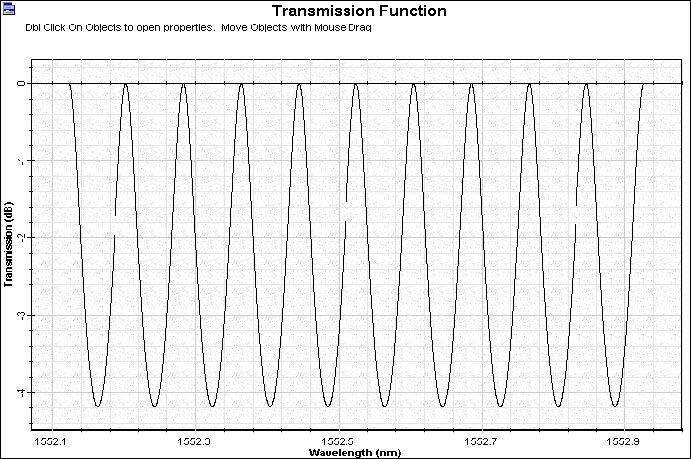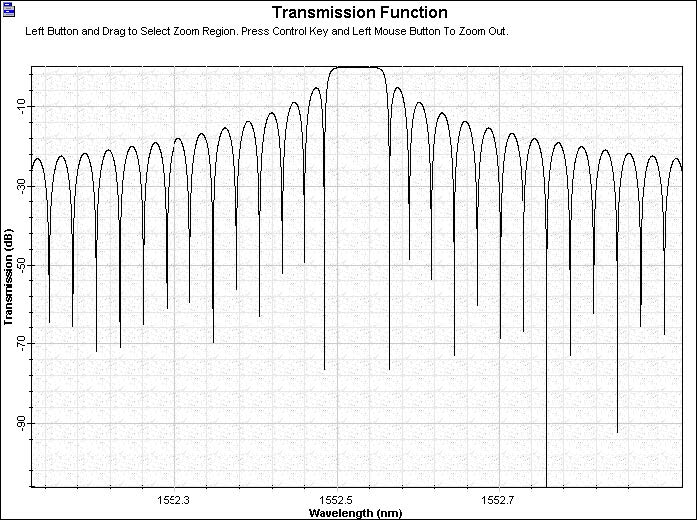OptiSystem component library includes different types of components for WDM systems, the tunable optical filters include Fabry-Perot filters, Mach-Zehnder interferometers, and grating based filters.
Fabry-Perot filters
Fabry-Perot filter.osd shows the transmission of a Fabry-Perot filter used as a tunable optical filter (see Figure 1). The frequency spacing between two successive transmission peaks is know as free spectral range (see Figure 2).
Figure 1: Fabry-Perot filter
Figure 2: Fabry-Perot filter transmission





